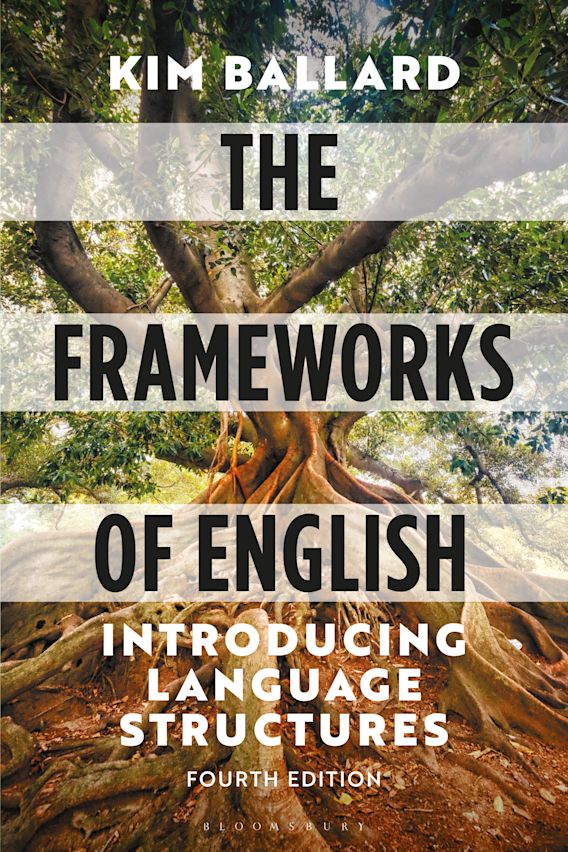



johndoe@gmail.com
Are you sure you want to reset the form?
Your mail has been sent successfully
Are you sure you want to remove the alert?
Your session is about to expire! You will be signed out in
Do you wish to stay signed in?
Question 1 (Consolidate)
The Macquarie Dictionary (www.macquariedictionary.com.au) describes itself as offering ‘a complete record of English as it is used in Australia’. The dictionary website also hosts the Australian Word Map, charting regional (and largely informal) words and phrases. The following examples are all drawn from this Word Map (accessed January 2021).
bluey
chilax
deadly treadly
donga
emu parade
kylie
sanga
womba
Search these words in the Australian Word Map and identify word class and meaning(s). Using the information given in the entries (and your own knowledge) make notes on any findings relating to the origin, formation and regional occurrence of the words.
Answer/discussion
| example | word class | meaning(s) | origin/formation |
| bluey | noun | 1. a summons (on blue paper) issued for a parking offence 2. a type of woollen jacket or coat 3. a bluebottle (type of fly) 4. a friend 5. a blue cattle dog | Formed by the suffixation of -y to the base, a strategy often found in Australian English. The meanings often have an association with the colour blue. |
| Definitions 1–3 in particular seem to be associated with New South Wales and Tasmania. | |||
|
| |||
| chilax | verb | chill and relax (A more emphatic version of the verbs which form this blend.) | A blend of the verbs chill (out) and relax. It may have its origins in a 2003 television talk show. |
| This is reported to be popular in the Melbourne area. | |||
|
| |||
| deadly treadly | noun | a bicycle, particularly a fast or unsafe one | Reduplication based on treadly (a bicycle), which is derived from the noun/verb treadle. |
| Treadly is a general colloquial term for a bicycle, and deadly treadly seems to have fairly widespread use. | |||
|
| |||
| donga | noun | 1. the outback 2. open ground 3. a shallow gully 4. portable/makeshift shelter | Derived from Zulu and Xhosa udonga, a gully formed by water. The first two meanings are colloquial. |
| The first two meanings are found in Central and Western Australia. Meaning 4 also seems common in Western and Northern Australia, and has military associations too. | |||
|
| |||
| emu parade | noun | an organised collection of items left on the ground, usually referring to school children collecting litter (as a punishment) | Noun + noun compound. There is a metaphorical connection with the emu, an indigenous Australian bird. Variations include emu bob and emu walk. |
| This seems to have widespread usage although there are some localised variations. | |||
|
| |||
| kylie | noun | a boomerang-like object made of tin and used for catching fish | A borrowing from the Aboriginal language Noongar. |
| Found particularly in the south-west of Western Australia, the home of the Noongar people. | |||
|
| |||
| sanga | noun | (an informal version of sandwich) | A clipping, analogous to British English sarnie. |
| A commonly used term, including the variant sango and spelling sanger. | |||
|
| |||
| womba | adjective | crazy | Mainly used by young Aborigines and believed to come from an Aboriginal language. |
| Associated with the Queensland area (NE Australia). | |||
Question 2 (Explore)
Consider the benefits (and possible weaknesses) of collecting and recording regional data in this way.
Answer/discussion
When regional data collections first began, they usually involved the researcher travelling from area to area to elicit and record examples from local speakers. The advent of online technology, however, has meant that speakers have been able to post their own contributions directly. Not only this, but the findings can be made generally available. As well as identifying regional words, contributors can also comment on usage and meaning, and discussions can also develop among contributors. Because information is based on spoken rather than written usage, a database such as the Australian Word Map can provide a detailed picture of everyday speech and even how it reflects cultural and social situations. For instance, womba (the last example in Question 1) reveals how an Aboriginal word is being introduced into the Queensland dialect. Much of the information provided by the contributors can, in turn, be used by the compilers of the Macquarie Dictionary.
There are, of course, some shortcomings to this kind of data collection. For instance, there are likely to be gaps in the reporting, so it’s not always possible to tell how widely a word is used. Equally, there’s no easy way to confirm that a word isn’t present in a particular area. Looking at the comments of the contributors, many of them report having used words in the 1960s–1980s when they were growing up. This may mean that the contributors tend to be from an older age group, so the linguistic innovations of younger people may be missing from the data, as are any comments they could make as to whether some of the given examples are falling out of use.

.